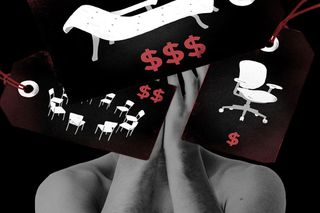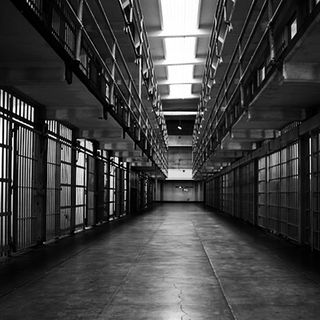
For Young People With Mental Health Struggles, Therapy Is a Luxury
“The session costs are pretty steep and one session is never enough. To go for prolonged sessions means dedicating both time and money.”

Mental health therapy in India exists in a highly stigmatized space; telling a loved one you need therapy often prompts them to ask if you’re crazy or to suggest alternative solutions, such as eating healthy or doing yoga and exercise. In such environments, accessing therapy becomes difficult. Stack on top of that the cost of therapy and the commitment it takes to see gradual results — which makes seeking help for mental health issues seems like an insurmountable feat.
It’s important to understand that mental health therapy is a process, and any process takes time, according to Dr. Anjendra R. Targe, a Pune-based psychiatrist. “It’s a process of exploring and understanding one’s own self; it’s a process of change and growth,” he said. “The revelations brought about in the process of therapy are life-changing, and are generally that which helps in finding people a ‘cure’ to their problems.”
This process, however, or rather the prolonged cost and effort to engage in it, combined with the difficulty of finding the right therapist (which can often be a trial-and-error ordeal), can be a deterrent for some — especially young people starting out in their careers who can’t dedicate a set amount of money per month to deal with any and all stresses.
“The session costs are pretty steep and one session is never enough. To go for prolonged sessions means dedicating both time and money. A good therapist charges an easy [Rs.] 1,500 to 2,000 a session,” said R.M., 25, who feels a need to go to therapy but thinks she can’t afford it. “Once, twice, it’s okay. After a point, it pinches your pocket and only results in more stress. And since it’s still a taboo in the society, I mean mental health, it’s not really easy to come out to your parents and ask for help.” Currently, R.M. uses journaling and searching for alternative coping mechanisms on YouTube and Google to deal with “anxiety, fear, future, a general mix of adulting things,” she said.
Related on The Swaddle:
What to Expect From Therapy, and What Not to Expect
A.G., 21, is an intern, and can barely cover the cost of commuting and basic expenses with the salary she earns. Having gone to therapy before, she understands its benefits but doesn’t feel like she can rely on her family to pay for therapy. “No one ever explicitly said they don’t want to pay for my therapy, but I know the circumstances my family is living in and the last thing I wanted was to become a burden,” A.G., said. “Avoiding therapy is adding to my difficulty in focusing; I get angry in a significantly shorter amount of time than I used to, and sometimes on useless issues. I’m following the same patterns [from before therapy?]: no relationship, constantly pushing everyone away, drowning myself in work.” For A.G., therapy is the “perfect solution,” but the barriers seem insurmountable. “Convincing people around you and you accepting that you need therapy along with understanding that it’ll be a long process and having the patience and commitment to regularly go to therapy are issues enough. And once you somehow tackle them, the cost adds to the issues further,” she said.
We need to create more awareness about the need for therapy in an individual’s life, not only among those who need it, but also among “parents/schools/companies/other institutes [that]fund people who aren’t able to pay themselves,” Dr. Targe said. The stigma surrounding therapy, and a dire lack of awareness about the process leads people to chalk it off as an added, perhaps optional, expense, according to Dr. Targe. He says there are several misconceptions about therapy that people have: “how can just talking help?” “I can do the same with my friends/family, too;” “it’s a waste of money;” “it’s a long process, and I don’t know if it’s worth it.” These notions make the cost of therapy seem even steeper, according to Dr. Targe, whose fees range from Rs. 1,000 to Rs. 2,000 per session.
The cost is a deterrent because there is a “general lack of self-awareness regarding the process of recovery from mental illness; stigma and misconceptions associated with treatment; a general lack of patience from the patients’ side and the desire for quick results; which is especially true in the Indian setup; lack of knowledge of what ‘therapy’ or ‘counseling’ entails,” Dr. Targe said. “Mental health is not prioritized, like other ‘physical’ chronic and debilitating illness for which patients are willing to shell out whatever is asked of them.” Many hold a general mistrust of sharing their problems with strangers, which further makes people believe the cost isn’t worth it, Dr. Targe said.
“Considering what the average young person — even if they aren’t financially independent — spends on leisure and other activities,” therapy isn’t that expensive, Dr. Targe contends.
The cost of therapy can also be adjusted depending on the frequency of sessions, which in turn can be increased or reduced depending on if the patient is experiencing immediate crises, Dr. Targe said. And the cost is set according to the amount of work both parties need to do in order to progress — “Therapy is constant work from both ends — the patient’s, and the therapist’s. The therapist can’t just see the patient from appointment to appointment without working on the individual patient notes and doing his/her research on it,” Dr. Targe said.
Related on The Swaddle:
All the Arguments You Need: to Convince People Therapy is Not a Scam
From initially free counseling sessions, to discounts, to installment plans, therapy clinics across India offer different payment models to patients, depending on their needs and the doctors’ availability.
Initially, Rahul Gohrani, 28, thought therapy was a stupid idea and that it was not for him; then, he thought he didn’t have the guts to speak about his issues to a stranger. When he got around these notions, the financial cost of therapy proved to be the final deterrent. Eventually, he found a clinic that offered a free session for first-timers. “I loved it, and realized it could help me in some ways,” he said. He paid Rs. 1,250 for the first two, and then asked for discounted rates, and has been attending therapy for Rs. 850 since. To his mother, however, Gohrani initially lied and said he was paying Rs. 500; otherwise, in his words, “she would have flipped.”
“First time, I was actually traveling, commuting to the therapist. I could only think about what therapy has been in the books and movies — Karthik Calling Karthik, Tuesdays with Morrie. It’s not like that — they don’t give you gyaan. They just make you talk,” Gohrani said, adding that all of his reservations around therapy, the mental block he had before, disappeared after the first session.
“When you fall sick, you have two options. Try a home remedy, take a steam, drink kadha. When it doesn’t work, you seek professional help,” Gohrani said. “When there’s something troubling you so much, but you’re scared, and if you speak up people will judge you. We always try to solve everything all by ourselves — [watch] YouTube videos, read on Medium, Google stuff, [keep] gratitude diaries, start by yoga. These are all secondary things. The first thing is that you have to have a concrete, reliable system of seeking help — and that’s a therapist.”
Rajvi Desai is The Swaddle's Culture Editor. After graduating from NYU as a Journalism and Politics major, she covered breaking news and politics in New York City, and dabbled in design and entertainment journalism. Back in the homeland, she's interested in tackling beauty, sports, politics and human rights in her gender-focused writing, while also co-managing The Swaddle Team's podcast, Respectfully Disagree.
Related


Little Big Things: The 23‑Year‑Old Attempting to Become a Full‑Time Contemporary Dancer
